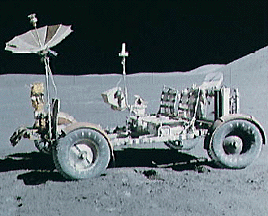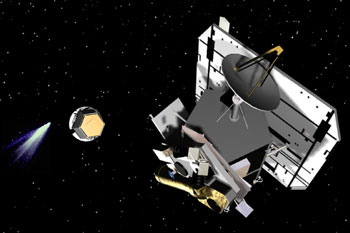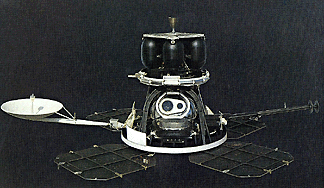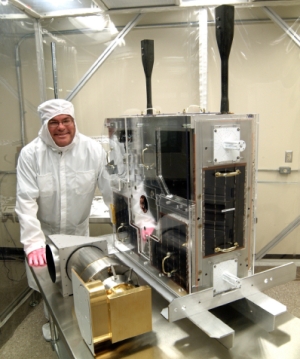The tiny MOST satellite with mission scientist Jaymie Matthews.
Click on image for full size
Canadian Space Agency
Related links:
MOST website
MOST - Canada's first space telescope
MOST is Canada's first space telescope. It is the size of a suitcase. It
was
launched in 2003 on an old missile. Under a treaty the missile had to
be taken apart. So they used it for science!
MOST has a 6-inch mirror and a digital camera. The camera takes images of
pulsating stars. This records the amount of light over time. The images
teach us about the insides of stars.
We control MOST with small radio dishes. It is smaller than the Hubble
Space Telescope. They call MOST the "humble space telescope". It may be
small, but it makes big discoveries! Visit the MOST website for more.
You might also be interested in:

The Hubble Space Telescope (HST) is really neat! It was first launched in 1990, but scientists started building it in the 1970's! We have found all kinds of objects like stars, nebulae and galaxies. The
...more
Apollo 11 was the first mission that landed a person on the moon. On July 16, 1969, the U. S. rocket Saturn 5 was launched carrying the lunar landing module Eagle. The Eagle was released and it reached
...more
Apollo 12 was launched on Nov. 14, 1969 and arrived at the Moon three days later. Astronauts Charles Conrad and Alan Bean descended to its surface, while Richard Gordon remained in lunar orbit aboard the
...more
Apollo 15 marked the start of a new series of missions from the Apollo space program, each capable of exploring more lunar terrain than ever before. Launched on July 26, 1971, Apollo 15 reached the Moon
...more
NASA chose Deep Impact to be part of a special series called the Discovery Program. This program is for cheap, scientific projects. In May 2001, NASA said it was ok to start with mission development for
...more
Galileo was a spacecraft that orbited Jupiter for eight years. It made many discoveries about Jupiter and its moons. Galileo was launched in 1989, and reached Jupiter in 1995. The spacecraft had two parts.
...more
During 1966 through 1967, five Lunar Orbiter spacecrafts were launched, with the purpose of mapping the Moon's surface in preparation for the Apollo and Surveyor landings. All five missions were successful,
...more















